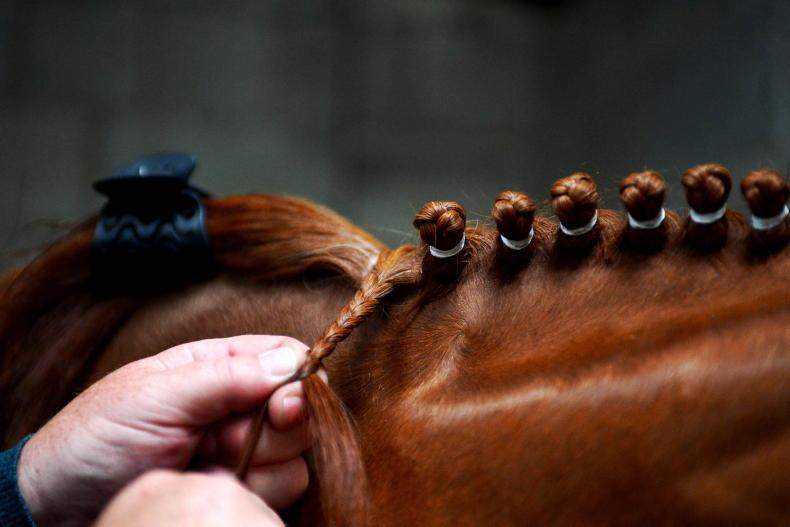IN the Irish sport horse world, presentation still carries weight - especially in the auction ring. But when it comes to manes, there’s one question that splits opinion: to plait or not to plait?
From Goresbridge to Cavan, horses are brought out in varying degrees of polish. While some sellers swear by tight, traditional plaits, others prefer to present their horses in a more natural state. So what’s the right approach for today’s discerning buyer?
Plaiting is deeply rooted in equestrian culture. A smartly-braided mane is often seen as a sign of good schooling and careful handling. At dressage-focused auctions or showing stock sales, plaits are often expected. They can highlight the neck, create a cleaner outline, and can help younger horses appear more mature. Some vendors also believe that plaited horses attract more attention online, where first impressions are formed from photos and video reels.
But not everyone is convinced. “It’s not the Dublin Horse Show – it’s a working sale,” one seasoned buyer at this week’s Goresbridge Sales told Horse Sense. “I want to see the horse moving freely and comfortably. I’m not judging turnout. I’m watching how they walk into the ring and how they cope under pressure.”
Tight bands
There’s also the issue of temperament. Not every horse tolerates plaiting well - especially youngsters or those from field to sale within weeks. Tension caused by tight bands or fiddly prep can negatively affect performance in-hand or under saddle.
Horse Sense spoke to a number of vendors this week to gauge opinion. “It depends on the horse,” said one seller. “A refined young eventer with a sharp step might benefit from a clean, plaited look. A raw, powerful jumper with natural presence may not need the extra polish.”
“Be consistent.” If you’re plaiting, go the whole way: clean boots, trimmed whiskers, tidy tail. A scruffy plaiting job does more harm than good.”
“Read the room” was a definite consensus. At elite auctions like Monart or Go For Gold, top turnout is expected. For performance sales or hunting types, a pulled mane and clean coat is often enough.
Ultimately, buyers in Ireland tend to be focused on type, temperament and movement. Turnout tends to be secondary - but still part of the overall impression. The key is knowing your market. A buyer looking for a top-level event prospect may expect presentation that reflects discipline and detail. A dealer seeking a ready-to-go jumper may care more about attitude and ability than aesthetics.
Plaiting won’t sell a horse - but poor turnout might cost you a viewing. If it enhances your horse’s shape, highlights their training, and won’t upset their rhythm, go for it. If not, focus on what matters most: a confident, well-prepared horse that walks into the ring ready for their next chapter.
In the end, the mane question is simple to implement: use it to frame your horse - not hide them.


 This is a subscriber-only article
This is a subscriber-only article
 It looks like you're browsing in private mode
It looks like you're browsing in private mode





SHARING OPTIONS: